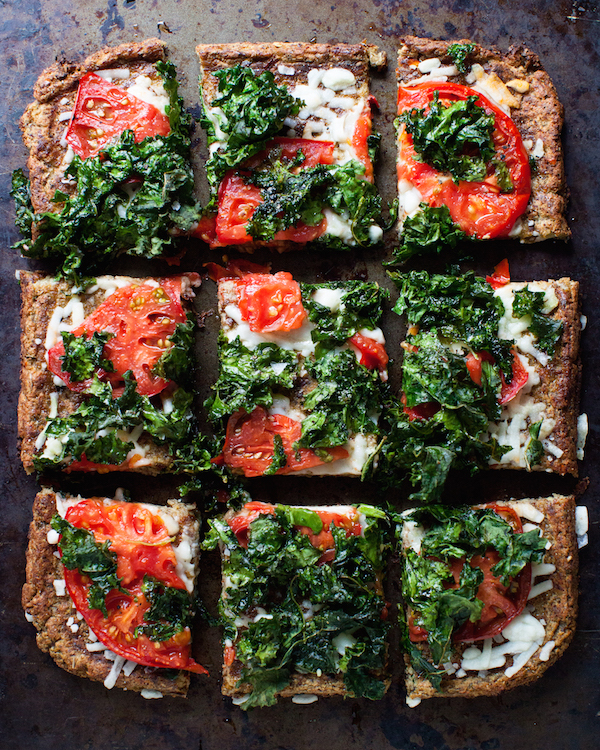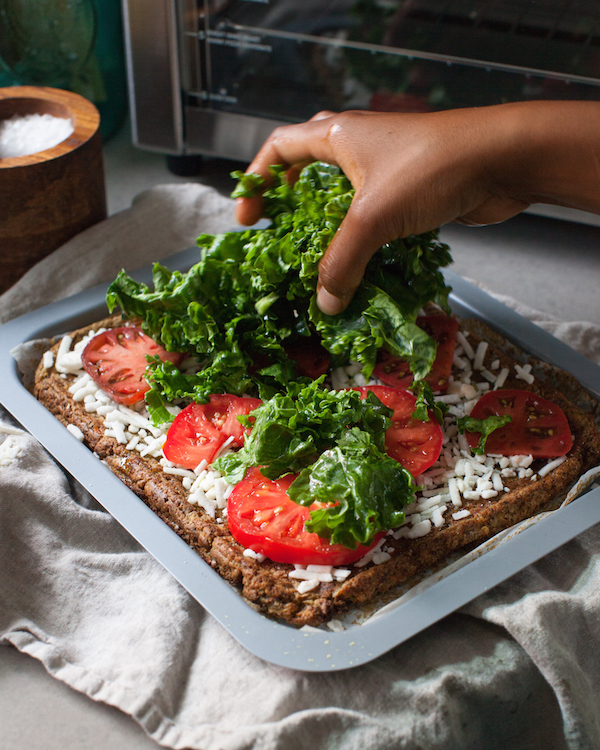Monday 30 September 2019
Vegan 3 Bean Chili
[[ This is a content summary only. Visit my website for full links, other content, and more! ]]
from Running on Real Food https://runningonrealfood.com/3-bean-vegan-chili/
via Enlightened Marketing
288: Breakthrough Solutions for Anxiety, Depression and PTSD With Apollo Founder Dr. David Rabin
I’m going to go ahead and say it: this is one of my favorite interviews I’ve ever done to date! You definitely need an open mind for this one. We’re talking about a breakthrough technology could change the way we manage, treat, and actually fix things like anxiety, treatment-resistant depression, PTSD, and other conditions. I’m …
Continue reading 288: Breakthrough Solutions for Anxiety, Depression and PTSD With Apollo Founder Dr. David Rabin...
from Wellness Mama® https://wellnessmama.com/podcast/david-rabin/
via SEO Derby
Slow Cooker Beef Ragu with Pappardelle + Weekly Menu
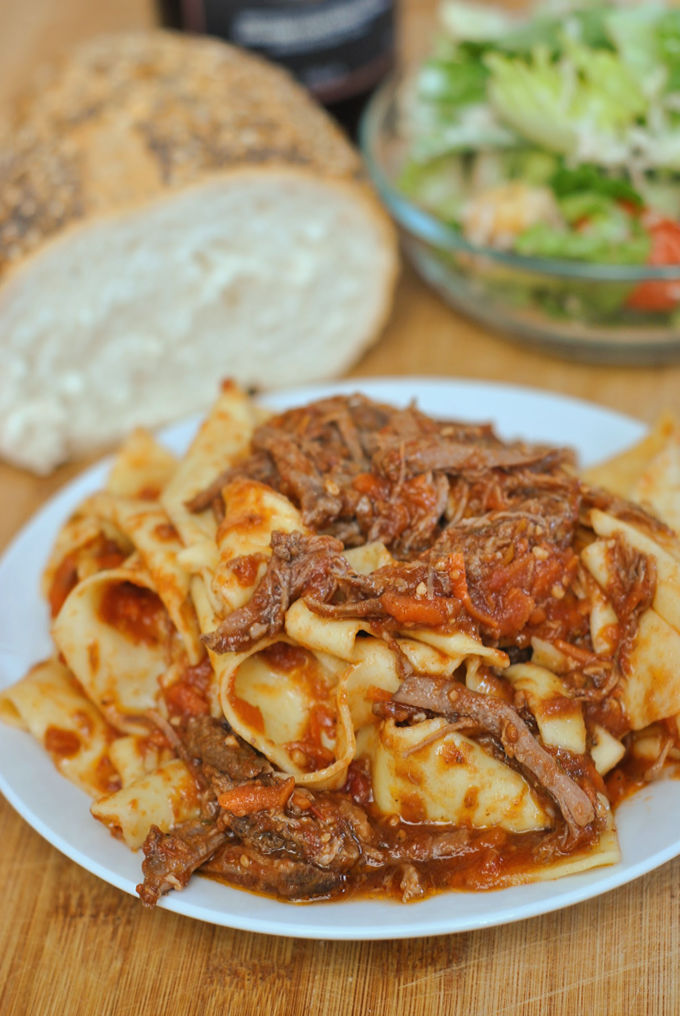
I joke that I nearly put the girls on Facebook Garage Sale yesterday. They were driving me nuts! I much prefer weekends with 2 parents around, let me tell you. Yesterday was exhausting. I got up this morning just to catch some alone time (and to finish this post). 
Yesterday was my first time volunteering in the nursery at church. Let’s just say 8 babies/toddlers with 2 adults and a whole lotta stranger danger and separation anxiety makes for a very long church service. Lord love volunteers – I can’t say I enjoyed my Sunday morning, but the kids were all really cute. The morning ended with one little dude PASSED OUT on me. I handed him over to dad and he was completely and totally OUT. I do miss those moments…
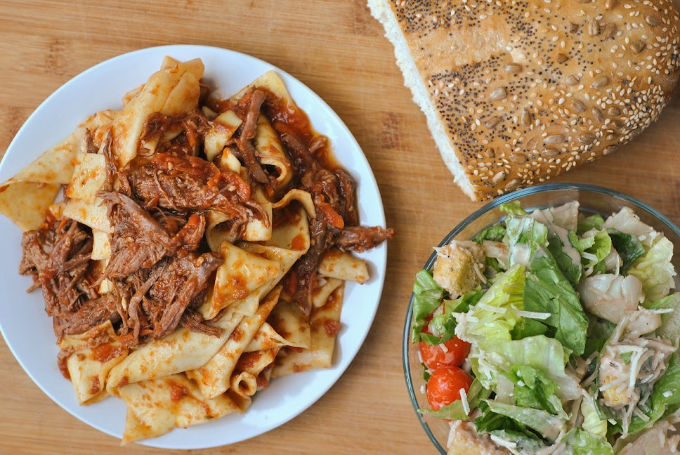
But I am not missing diapers and pull-ups! We are over a week now without any overnight accidents or use of pull-ups! Big news!
After church, the girls chose our lunch location after my selected place was closed…Taco Bell. Mark has introduced them to burritos at Taco Bell and they’re obsessed. So, we did that before heading to Aldi and Big Lots, home to unpack and make cookies, and back out to Meijer for everything we couldn’t get at the other 2 stores. PHEW. That’s a lot of retail with 2 little girls who want to buy everything and not pay any attention as to where they’re going. It made for a long afternoon.
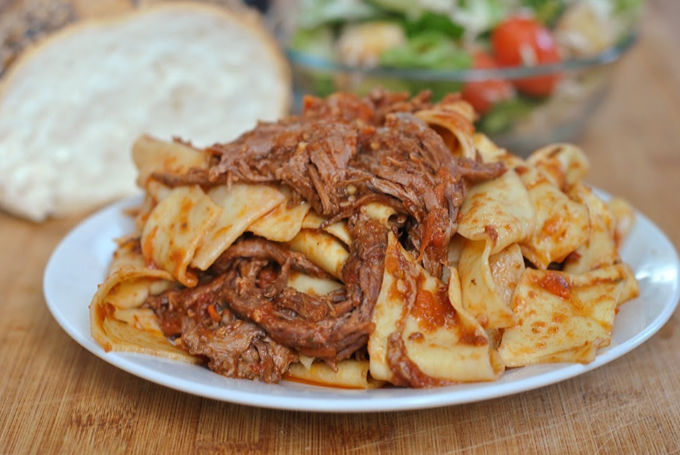
But, it was a very productive Sunday preceded by a very productive Saturday where I purged 25% of my closet. Literally. It feels so good! I kept the purge party going by getting rid of tonsssssss of books. I don’t think I need my Krause from undergrad (that means nothing to those that aren’t nutrition majors or who were nutrition majors at some point).
It was the perfect weekend to stay inside (rain and cold) and get stuff done…all while dinner for later this week simmered away in the crock pot. I just love that feeling. Hands-off slow cooker meals are my jam and if you love them, too, this recipe is for YOU! Quick and easy and if you’re feeling super lazy, you can skip the stove top prep and just throw it all in the slow cooker together. Voila!
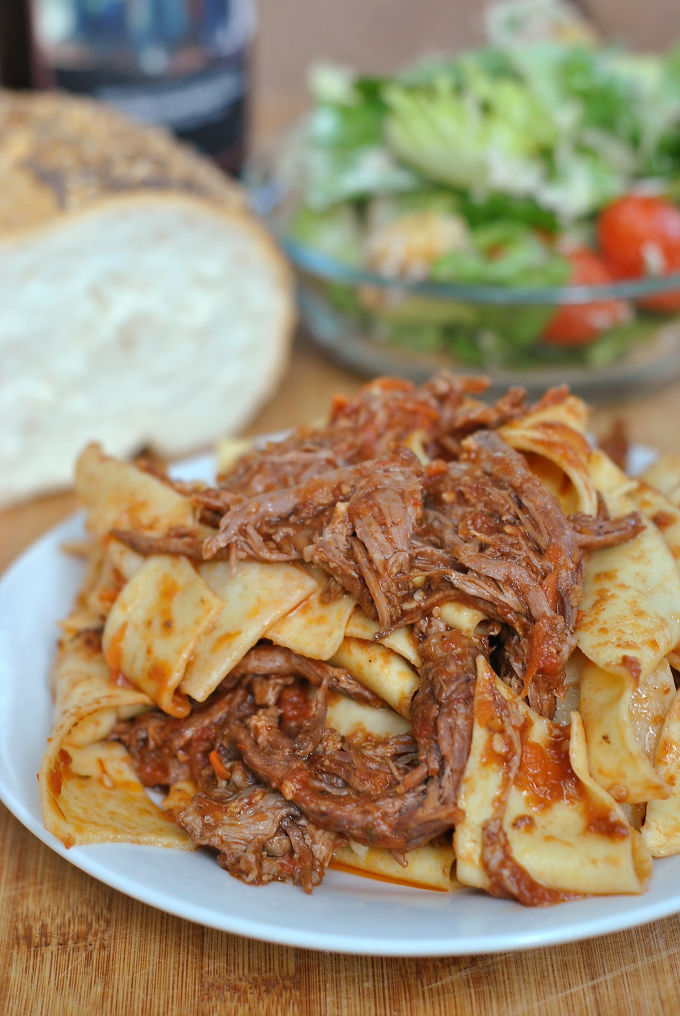
- 2 tsp olive oil
- 6 garlic cloves, minced
- 1½ lbs flank steak, cut against the grain into 4 pieces
- ½ tsp salt and pepper
- 1 (28 oz) can crushed tomatoes
- ¼ cup reduced sodium beef broth
- 2 carrots, chopped
- 2 bay leaves
- 2 sprigs fresh thyme
- 16 oz pappardelle pasta
- In a small skillet, heat the oil over medium high heat. Add the garlic and cook, stirring, until golden and lightly browned, about 1 minute. Season the beef with 1 teaspoon salt and pepper to taste. Brown the meat for 2-3 minutes per side; transfer to a 5- to 6-quart slow cooker. Pour the tomatoes and broth over the beef and add the garlic from step one, carrots, bay leaves, and thyme.
- Cover and cook on high for 6 hours or on low for 8 to 10 hours. Discard the herbs and shred the beef in the pot using 2 forks.
- Cook the pasta according to package directions. Drain, return to the pot, and add the sauce from the slow cooker. Increase the heat to high and cook, stirring, until the pasta and sauce are combined, about 1 minute.
Weekly Menu: September 29th – October 3th
- Sunday: leftover pesto tortellini, green beans, bread
- Monday: Black Bean and Corn Salad with potstickers
- Tuesday: salsa chicken tacos with guacamole salad
- Wednesday: leftovers
- Thursday: Honey BBQ Chicken Pizza Tacos with salad
Be well,

from Prevention RD https://preventionrd.com/2019/09/slow-cooker-beef-ragu-with-pappardelle-weekly-menu/
via Heart Based Marketing
Crock Pot (or Instant Pot) Meatloaf Recipe
Reading Time: 3 minutes Love it or hate it (we love it!) meatloaf is a classic comfort food. This is a great versatile base recipe that works in the slow cooker or Instant Pot to keep things simple. I can either pop it in the slow cooker early in the day, or toss it in the Instant Pot half an hour …
Continue reading Crock Pot (or Instant Pot) Meatloaf Recipe...
from Wellness Mama® https://wellnessmama.com/3258/crock-pot-meatloaf/
via SEO Derby
Healthy Pumpkin Muffins
 These healthy pumpkin muffins are soft, moist, and have a perfectly crunchy muffin top. Make a batch of these pumpkin muffins for an easy breakfast or snack throughout the week! Do you need to use the rest of our pureed pumpkin in the refrigerator? Make this single-serve pumpkin mug cake ...
These healthy pumpkin muffins are soft, moist, and have a perfectly crunchy muffin top. Make a batch of these pumpkin muffins for an easy breakfast or snack throughout the week! Do you need to use the rest of our pureed pumpkin in the refrigerator? Make this single-serve pumpkin mug cake ...
The post Healthy Pumpkin Muffins appeared first on Fit Foodie Finds.
from Fit Foodie Finds https://fitfoodiefinds.com/healthy-whole-wheat-pumpkin-walnut-bread-muffins/
via Holistic Clients
Sunday 29 September 2019
We the Future 2019: Talks from TED, Skoll Foundation and United Nations Foundation

Hosts Rajesh Mirchandani and Chee Pearlman wave to “We The Future” attendees who watched the salon live from around the world through TED World Theater technology. (Photo: Ryan Lash / TED)
At “We the Future,” a day of talks from TED, the Skoll Foundation and United Nations Foundation at the TED World Theater in New York City, 18 speakers and performers shared daring ideas, deep analysis, cautionary tales and behavior-changing strategies aimed at meeting the UN Sustainable Development Goals (SDGs), the global goals created in partnership with individuals around the world and adopted at the United Nations in 2015.
The event: We the Future, the second year TED has partnered with Skoll Foundation and United Nations Foundation to share ingenious efforts of people from every corner of the globe
When and where: Tuesday, September 24, 2019, at the TED World Theater in New York, NY
Music: Queen Esther with Hilliard Greene and Jeff McGlaughlin, performing the jazzy “Blow Blossoms” and the protest song “All That We Are”
The talks in brief:
David Wallace-Wells, journalist
Big idea: The climate crisis is too vast and complicated to solve with a silver bullet. We need a shift in how we live: a whole new politics, economics and relationship to technology and nature.
Why? The climate crisis isn’t the legacy of our ancestors, but the work of a single generation — ours, says Wallace-Wells. Half of all the emissions from the burning of fossil fuels in the history of humanity were produced in the last 30 years. We clearly have immense power over the climate, and it’s put us on the brink of catastrophe — but it also means we’re the ones writing the story of our planet’s future. If we are to survive, we’ll need to reshape society as we know it — from building entirely new electric grids, planes and infrastructures to rethinking the way the global community comes together to support those most affected by climate change. In we do that, we just might build a new world that’s livable, prosperous and green.
Quote of the talk: “We won’t be able to beat climate change — only live with it and limit it.”

“When the cost of inaction is that innocent children are left unprotected, unvaccinated, unable to go to school … trapped in a cycle of poverty, exclusion and invisibility, it on us to take this issue out of darkness and into the light,” says legal identity expert Kristen Wenz. She speaks at “We The Future” on September 24, 2019, at the TED World Theater in New York, NY. (Photo: Ryan Lash / TED)
Kristen Wenz, legal identity expert
Big idea: Over one billion people — mostly children — don’t have legal identities or birth certificates, preventing them from accessing vital government services like healthcare and schooling. It’s a massive human rights violation we need to fix.
How? There are five key approaches to ensuring children are registered and protected — reduce distance, reduce cost, simplify the process, remove discrimination and increase demand. In Tanzania, the government resolved several of the barriers to registering a child that new parents face by creating an online registration system and implementing registration hubs in community spaces. The results were dramatic: the number of children with birth certificates went from 16 to 83 percent in just a few years. By designing solutions with these approaches in mind, we can provide better protection and brighter opportunities for children across the world.
Quote of the talk: “When the cost of inaction is that innocent children are left unprotected, unvaccinated, unable to go to school … trapped in a cycle of poverty, exclusion and invisibility, it on us to take this issue out of darkness and into the light.”
Don Gips, CEO of the Skoll Foundation, in conversation with TEDWomen curator and author Pat Michell
Big idea: Don Gips turned away from careers in both government and business and became CEO of the Skoll Foundation for one reason: the opportunity to take charge of investing in solutions to the most urgent issues humanity faces. Now, it’s the foundation’s mission is to identify the investments that will leverage the greatest changes.
How? By discovering the change-makers that will build new solutions to global problems, the Skoll Foundation reaches into the communities most in crisis and helps incubate and develop solutions, rather than simply throwing money at them. As their investments bear fruit, Gips hopes to inspire the rest of the philanthropic community to find better ways to direct their resources.
Quote of the interview: “We don’t tell the change-maker what the solution is. We invest in their solution, and go along on the journey with them.”

“By making aesthetic, some might say beautiful, arrangements out of the world’s waste, I hope to hook the viewer, to draw in those that are numb to the horrors of the world and give them a different way to understand what is happening,” says artist Alejandro Durán. He speaks at “We The Future” on September 24, 2019, at the TED World Theater in New York, NY. (Photo: Ryan Lash / TED)
Alejandro Durán, artist
Big Idea: Art can be a tool to point to the environmental atrocities happening to our oceans — leaving viewers both mesmerized by the aesthetic and shocked by the circumstances they represent.
Why? From prosthetic legs to bottle caps, artist Alejandro Durán uses objects he finds polluting the waters of his native Sian Ka’an, Mexico to make ephemeral environmental artworks. He meticulously organizes materials by color and curates them into site-specific work. Durán put on his first “Museo de La Basura or Museum of Garbage“ exhibition in 2015, which spoke to the horrors of the Great Pacific Garbage Patch, and he’s still making art that speaks to the problem of ocean trash. By re-using the objects endlessly, Durán creates new works that engage communities in environmental art-making, attempting to depict the reality of our current environmental predicament and make the invisible visible.
Quote of the talk: “By making aesthetic, some might say beautiful, arrangements out of the world’s waste, I hope to hook the viewer, to draw in those that are numb to the horrors of the world and give them a different way to understand what is happening.”
Andrew Forrest, entrepreneur, in conversation with head of TED Chris Anderson
Big idea: The true — and achievable! — business case for investing in plastic recycling.
How? Since earning his PhD in marine ecology, Forrest has dedicated his time and money to solving the global plastic problem, which is choking our waterways and oceans with toxic material that never biodegrades. “I learned a lot about marine life,” he says of his academic experience. “But it taught me more about marine death.” To save ourselves and our underwater neighbors from death by nanoplastics, Forrest says we need a mass environmental transition (funded by the big corporations of the world) and to increase the price of plastic, turning the tide on the recycling industry for the better.
Quote of the talk: “[Plastic] is an incredible substance designed for the economy. It’s the worst substance possible for the environment.”
Raj Panjabi, cofounder of medical NGO Last Mile Health.
Big idea: Community health workers armed with training and technology are our first line of defense against deadly viral surges. If we are to fully protect the world from killer diseases, we must ensure that people living in the most remote areas of the planet are never far from a community health worker trained to throttle epidemics at their outset.
How? In December 2013, Ebola broke out in West Africa and began a trans-border spread that threatened to wipe out millions of people. Disease fighters across Africa joined the battle to stop it — including Liberian health workers trained by Last Mile Health and armed with the technology, knowledge and support necessary to serve their communities. With their help, Ebola was stopped (for now), after killing 11,000 people. Panjabi believes that if we train and pay more community health workers, their presence in underserved areas will not only stop epidemics, but also save the lives of the millions of people threatened by diseases like malaria, pneumonia, and diarrhea.
Quote of the talk: “We dream of a future when millions of people … can gain dignified jobs as community health workers, so they can serve their neighbors in the forest communities of West Africa to the fishing villages of the Amazon; from the hilltops of Appalachia to the mountains of Afghanistan.”

“Indigenous people have the answer. If we want to save the Amazon, we have to act now,” says Tashka Yawanawá, speaking onstage with his wife, Laura, at “We The Future” on September 24, 2019, at the TED World Theater in New York, NY. (Photo: Ryan Lash / TED)
Tashka and Laura Yawanawá, Chief of the Yawanawá
Big idea: To save the Amazon rainforest, let’s empower indigenous people who have been coexisting with the rainforest for centuries.
Why? Tashka Yawanawá is chief of the Yawanawá people in Acre, Brazil, leading 900 people who steward 400,000 acres of Brazilian Amazon rainforest. As footage of the Amazon burning shocks the world’s conscious, Tashka and his wife, Laura, call for us to transform this moment into an opportunity to support indigenous people who have the experience, knowledge and tools to protect the land — if only the rest of the world starts to listen.
Quote of the talk: “Indigenous people have the answer. If we want to save the Amazon, we have to act now.”
Alasdair Harris, ocean conservationist
Big idea: To the impoverished fishers that rely on the sea for their food — and who comprise 90 percent of the world’s fishing fleet — outside interference by scientists and marine managers can seem like just another barrier to their survival. Could the world rejuvenate its marine life and replenish its fish stocks by inspiring coastal communities, rather than simply regulating them?
How? When he first went to Madagascar, marine biologist Alasdair Harris failed to convince local leaders to agree to a years-long plan to close their threatened coral reefs to fishing. But when a contained plan to preserve a breeding ground for an important local species of octopus led to mushrooming catches six months later, the same elders banded together with leaders across Madagascar to spearhead a conservation revolution. Today, Harris’s organization Blue Ventures works to help coastal communities worldwide to take control of their own ecosystems.
Quote of the talk: “When we design it right, marine conservation reaps dividends that go far beyond protecting nature — improving catches, and driving waves of social change along entire coastlines, strengthening confidence, cooperation, and the resilience of communities to face the injustice of poverty and climate change.”
Bright Simons, social entrepreneur and product security expert
Big idea: A global breakdown of the trustworthiness of markets and regulatory institutions has led to a flurry of counterfeit drugs, mislabeled food and defective parts. Africa has been dealing with counterfeit goods for years, and entrepreneurs like Bright Simons have developed myriad ways consumers can confirm that their food and drug purchases are genuine. Why are these methods ignored in the rest of the world?
How? Bright Simons demonstrates some of the innovative solutions Africans use to restore trust in their life-giving staples, such as text hotlines to confirm medications are real and seed databases to certify authenticity of crops. Yet he laments that in the developed world, these solutions are overlooked because they allegedly “don’t scale” — an attitude Simons calls “mental latitude imperialism.” It’s time to champion “intellectual justice” — and look at these supposedly non-scalable innovations with new respect.
Quote of the talk: “I am from that part of the world often euphemistically referred to as either the ‘Global South’ or the ‘developing world.’ But I’d like to be blunt about it: when we say those words, what we really mean is the poor world, those corners of the world with readymade containers full of hand-me-down ideas of other places and other people.”

LaToya Ruby Frazier speaks at “We The Future” on September 24, 2019, at the TED World Theater in New York, NY. (Photo: Ryan Lash / TED)
LaToya Ruby Frazier, artist
Big Idea: LaToya Ruby Frazier’s powerful portraits of women in Flint, Michigan document the reality of the Flint water crisis, bringing awareness to the ongoing issue and creating real, positive change.
How? Frazier’s portraits of the daily lives of women affected by the Flint water crisis are striking reminders that, after all the news crews were gone, the people of Flint still did not have clean water. For one photo series, she closely followed the lives of Amber Hasan and Shea Cobb — two activists, poets and best friends — who were working to educate the public about the water crisis. Frazier has continued collaborating with Hasan and Cobb to seek justice and relief for those suffering in Flint. In 2019, they helped raise funds for an atmospheric water generator that provided 120,000 gallons of water to Flint residents.
Quote of the talk: “Water is life. It is the spirit that binds us from sickness, death and destruction. Imagine how many millions of lives we could save if [the atmospheric water generator] were in places like Newark, New Jersey, South Africa and India — with compassion instead of profit motives.”
Cassie Flynn, global climate change advisor
Big idea: We need a new, playful way for the United Nations to compile citizen consensus on climate change and connect it with governments and global leaders.
How? The UN has taken on an entirely new model of reaching the masses: mobile phone games. Flynn shares how their game Mission 1.5 can help people learn all about their policy choices on climate change by allowing them to play as heads of state. From there, the outcomes of their gameplay will be compiled and shared with their national leaders and the public. Flynn foresees this as a fresh, feasible way to meet citizens where they are, educate them about climate change and better connect them to the people who are making those tough decisions.
Quote of the talk: “Right now, world leaders are faced with the biggest and most impactful decisions of their entire lives. What they decide to do on climate change will either lead to a riskier, more unstable planet or a future that is more prosperous and sustainable for us all.”
Wanjira Mathai, entrepreneur
Big Idea: Corruption is a constant threat in Kenya. To defeat it, both there and anywhere, we need to steer youth towards integrity through education and help them understand the power of the individual.
Why? In 1989, Karura Forest, a green public oasis in Nairobi, was almost taken away by a corrupt government. Kenyan political activist Wangari Maathai, founder of the Greenbelt Movement and Nobel Prize recipient, fought back fiercely and won. Continuing Maathai’s legacy, her daughter Wanjira paints a vivid picture of the corruption that is still very much alive in Kenya — a country that loses a third of its state budget to corruption every year. “Human beings are not born corrupt. At some point these behaviors are fostered by a culture that promotes individual gain over collective progress,” she says. She shares a three-pronged strategy that can be replicated at any school, fighting corruption before it takes root by addressing why it happens, modeling integrity and teaching leadership skills.
Quote of the talk: “We cannot complain forever. We either decide that we are going to live with it, or we are going to change it. And if we are going to change it, we know that today, most of the world’s problems are caused by corruption and greed and selfishness.”
from TED Blog https://blog.ted.com/we-the-future-2019-talks-from-ted-skoll-foundation-and-united-nations-foundation/
via Sol Danmeri
Roasted Brussels Sprouts with Bacon
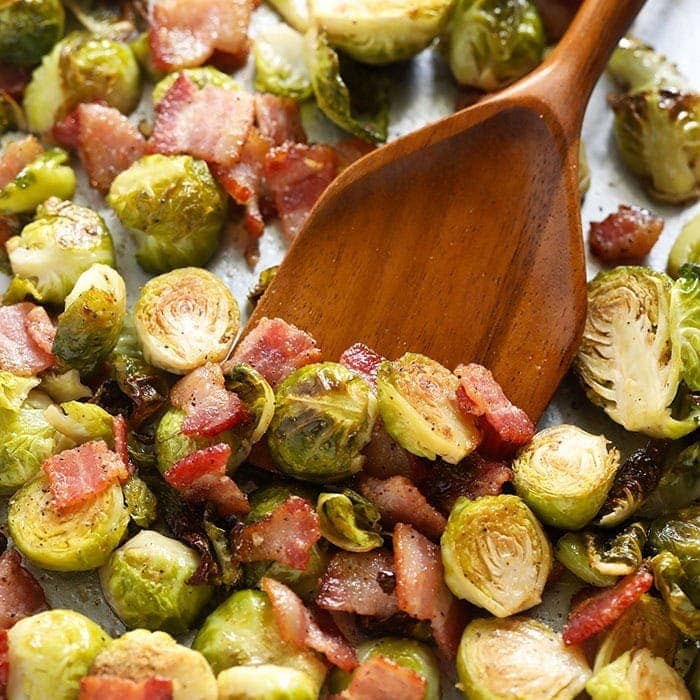 Roasted Brussels Sprouts with Bacon – the most delicious holiday side you’ll ever sink your teeth in! This recipe is made with just a few simple ingredients and in less than 30 minutes! Roasted Brussels sprouts are hands down the best way to make this mini cabbage-like veggie. And, when ...
Roasted Brussels Sprouts with Bacon – the most delicious holiday side you’ll ever sink your teeth in! This recipe is made with just a few simple ingredients and in less than 30 minutes! Roasted Brussels sprouts are hands down the best way to make this mini cabbage-like veggie. And, when ...
The post Roasted Brussels Sprouts with Bacon appeared first on Fit Foodie Finds.
from Fit Foodie Finds https://fitfoodiefinds.com/roasted-brussels-sprouts-with-bacon/
via Holistic Clients
Saturday 28 September 2019
Flourless Blondies
 Flourless blondies so gooey you can’t even tell they’re healthy! Made with cashew butter, coconut flour, and dark chocolate chips, this is the only blondie recipe you’ll ever want to make again. Enjoy these flourless blondies year-round! They’re gooey, chewy, and everything you’ve ever wanted in a dessert bar recipe. ...
Flourless blondies so gooey you can’t even tell they’re healthy! Made with cashew butter, coconut flour, and dark chocolate chips, this is the only blondie recipe you’ll ever want to make again. Enjoy these flourless blondies year-round! They’re gooey, chewy, and everything you’ve ever wanted in a dessert bar recipe. ...
The post Flourless Blondies appeared first on Fit Foodie Finds.
from Fit Foodie Finds https://fitfoodiefinds.com/healthier-blondies-gluten-free/
via Holistic Clients
Vegan Cauliflower Crust Pizza
This post is sponsored by the new Emeril Lagasse Power Air Fryer 360. I’ve been using it to make all sorts of delicious recipes including this cauliflower crust pizza. This countertop appliance replaces many other appliances because you can use it to air fry, bake, roast, broil, and even dehydrate. From entertaining friends to prepping your meals for the week, the Power Air Fryer 360 makes life in the kitchen so much easier!
What can’t you do with cauliflower? From crudité to vegan fried chick’n cauliflower makes it happen. One of my favorite ways to use it is for cauliflower crust pizza. Actually, I had forgotten about this terrific recipe. I used to make it for my clients all the time when I was a vegan chef, and they of course loved it. You can top it just how you would a traditional pizza, only you just bulked up the nutritional value by swapping wheat flour for cauliflower––perhaps the world’s most versatile vegetable.
One of my top 5 kitchen appliances is definitely the countertop oven aka toaster oven aka this Emeril Lagasse Power Airfryer 360. Yes, it air fries, but it also bakes, roasts, dehydrates, rotessories (can you rotisserie a cauliflower?!), broils, reheats, and makes pizza. That last feature––makes pizza––is the one I’m most often in the mood for, and I don’t like to turn on my built in oven if I don’t have to. Actually, I cannot remember the last time I turned that thing on! The Power Airfryer 360 replaces so many bulky appliances, like the stand alone air fryer and dehydrator, and apparently my oven too. Even for pizza!
I chose to top this cauliflower pizza with kale and wild mushrooms I got at Sunday’s farmer’s market. You, of course, can top it with whatever you’re into. You could keep it simple and do tomato sauce and vegan cheese, go all Hawaiian and top it with pineapple and BBQ sauce, or do what I did and top a cruciferous with another cruciferous. So healthy 
The pizza crust is simple and straightforward, which is why it makes a great base for any topping. I use a food processor to mince/grate the cauliflower, then mix it with a few herbs and spices, nutritional yeast, rice flour, and a flaxseed “egg” to hold it all together. This cauliflower pizza crust is as good as any store-bought one, only better and fresher. You could even make a few crusts and freeze them for later because pizza!
- 5 tablespoons ground flaxseed + ½ cup water
- about 5 cups grated cauliflower
- ½ cup brown rice flour
- ¼ cup nutritional yeast
- 1 teaspoon dried basil
- 1 teaspoon dried oregano
- 1 teaspoon garlic powder
- ½ tsp red pepper flakes
- 1 tsp salt
- ½ cup meltable vegan cheese
- 1 tomato, sliced
- 6 cups kale, chopped (massaged gently with ½ tsp olive oil)
- Preheat the oven to 425º, and line a baking sheet with parchment paper.
- Mix the flaxseed and water in a small bowl, and let sit.
- Pulse the cauliflower in a food processor until it’s minced finely, similar to the texture of wet sand or quinoa.
- Warm 1 tablespoon of grapeseed oil in a skillet on medium heat, then add the cauliflower. Stir, and cook for about 5 minutes.
- Remove from heat.
- In a large mixing bowl combine the remaining crust ingredients, the cooked cauliflower, and the flax “egg”. Stir well.
- Use a spatula to transfer the batter to the baking sheet, and spread it evenly over the parchment paper.
- Bake for 20 minutes, then remove from oven and flip.
- Bake for another 10 minutes.
- Massage your kale with 1 teaspoon of olive oil.
- Top the cauliflower pizza crust with vegan cheese, sliced tomatoes, and kale.
- Bake another 10 minutes, or until the kale is crispy and tender.
- Serve immediately.
The post Vegan Cauliflower Crust Pizza appeared first on Sweet Potato Soul by Jenné Claiborne.
from Sweet Potato Soul by Jenné Claiborne http://sweetpotatosoul.com/2019/09/vegan-cauliflower-crust-pizza.html
via Danmeri
Vegan Chocolate Chip Banana Muffins
[[ This is a content summary only. Visit my website for full links, other content, and more! ]]
from Running on Real Food https://runningonrealfood.com/vegan-chocolate-chip-banana-muffins/
via Enlightened Marketing
Instant Pot Butternut Squash
 Cook butternut squash in no time by cooking it in the Instant Pot! You will have perfectly cooked butternut squash in under 10 minutes. Use the butternut squash in all your favorite recipes! Don’t have an Instant Pot? Try roasting your butternut squash in the oven by following our tutorial ...
Cook butternut squash in no time by cooking it in the Instant Pot! You will have perfectly cooked butternut squash in under 10 minutes. Use the butternut squash in all your favorite recipes! Don’t have an Instant Pot? Try roasting your butternut squash in the oven by following our tutorial ...
The post Instant Pot Butternut Squash appeared first on Fit Foodie Finds.
from Fit Foodie Finds https://fitfoodiefinds.com/instant-pot-butternut-squash/
via Holistic Clients
Homemade Butternut Squash Puree
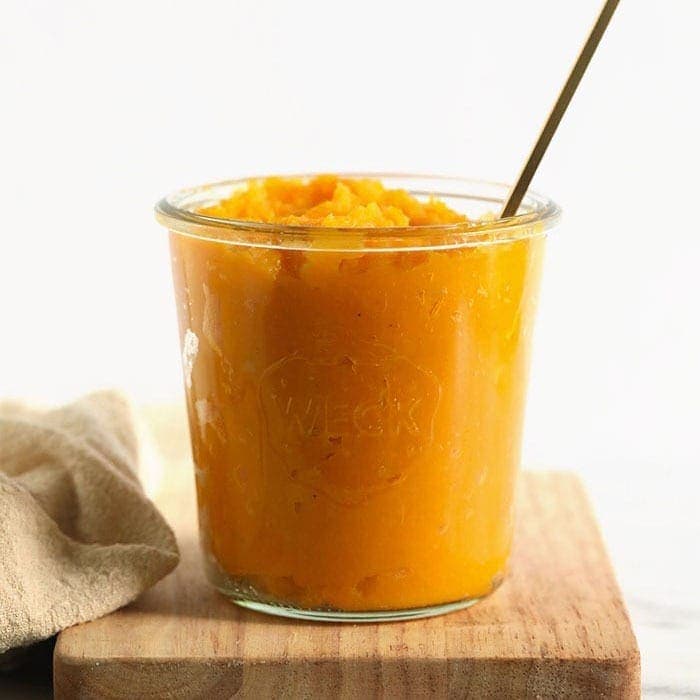 Butternut Squash Puree just might be the most versatile ingredient to incorporate into your harvest time meals. Great as a base for soups, used in baked goods, batched for baby food, and much much more, this homemade butternut squash puree is a must-have for your fall and winter menus! Squash ...
Butternut Squash Puree just might be the most versatile ingredient to incorporate into your harvest time meals. Great as a base for soups, used in baked goods, batched for baby food, and much much more, this homemade butternut squash puree is a must-have for your fall and winter menus! Squash ...
The post Homemade Butternut Squash Puree appeared first on Fit Foodie Finds.
from Fit Foodie Finds https://fitfoodiefinds.com/homemade-butternut-squash-puree/
via Holistic Clients
Friday 27 September 2019
Family Friday (vol. 100): Fall Updates
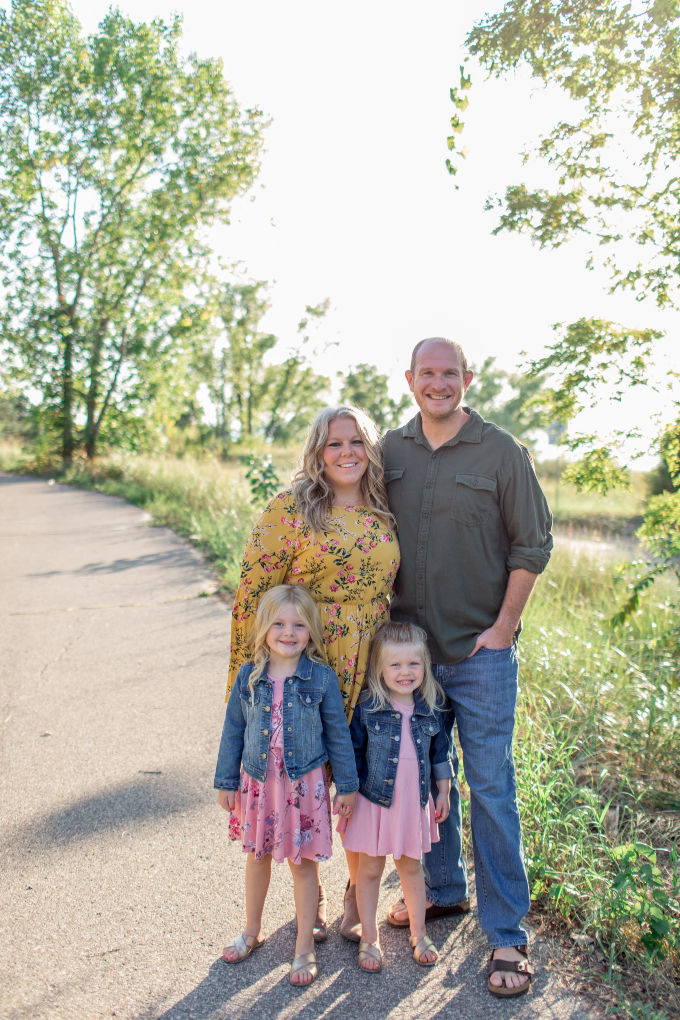
Hello, fall. And sadly, it looks like we’ll be saying hello to lots of rain this weekend, too. NOT COOL. Mark also departs for a work trip and so the girls and I will have LOTS of 1:1 time. Wish me luck  How that man goes to India and back in less than 5 days…yeah, it’s insane. And for someone that regularly requires 9-10 hours of sleep a night, I don’t know he transverses time zones as well as he does.
How that man goes to India and back in less than 5 days…yeah, it’s insane. And for someone that regularly requires 9-10 hours of sleep a night, I don’t know he transverses time zones as well as he does.
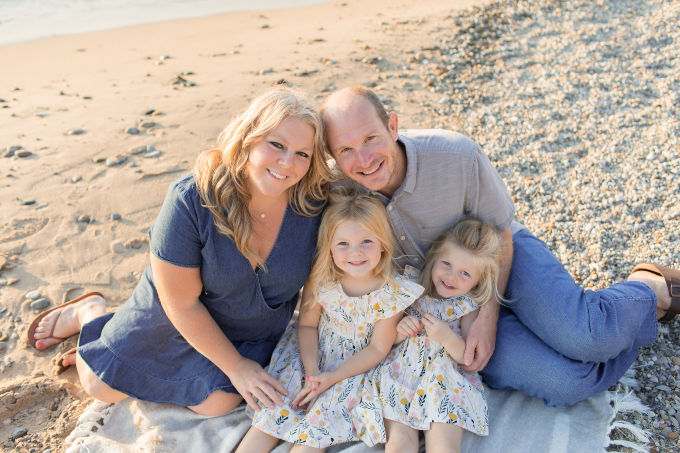
Mark is playing hockey in my league this season. I was instructed NOT to draft him (as a captain of 1 of the 6 teams, he asked this of me). So Sunday evenings are now always covered, in part at least, by a babysitter. But he seems to be enjoying it a lot and he even scored his first goal last week! I missed it – I was standing at the opposite end of the rink. Oops. My team, on the other hand, is 0-3 and yet to gel. Yours truly is also playing defense and that is not my learned position.
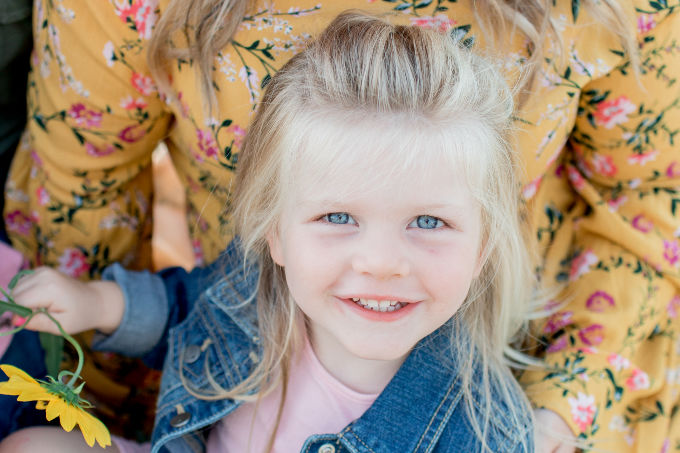
We had family pictures taken a few weeks ago. The photographer was a friend of a friend and she did amazing. Aren’t they adorable!? Piper was a real gem (sarcasm) the whole time, but she managed to get some cute shots, including those icy blue eyes. They’re just stunning! Her hair is growing so quickly and it’s funny how straight and glossy Piper’s hair is while Shea is my child through and through – curly/kinky hair that is mostly a hot mess at all times…but curls like a dream with some effort!  Mark always complains about family pictures, but I just love them! The result that is – the process with children is always painful.
Mark always complains about family pictures, but I just love them! The result that is – the process with children is always painful. 
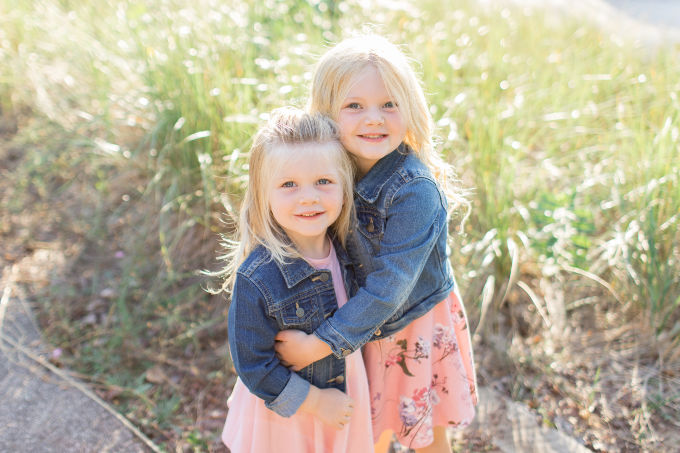
As we move into cooler temperatures, I’m considering what fall and winter sports we want to get the girls into. We have had zero organized sports since t-ball and I think that will be our first and last year of that (kidding a little). I think we will start with dance and/or gymnastics for both girls and in the winter, move them both into swim and Shea back into ice skating. I mean, there’s NOTHING else going on in small town Michigan in the colder months, so might as well be busy with indoor stuff. Piper is super girly and I can see her L-O-V-I-N-G ballet and tap. She will own that leotard and tutu, no doubt!
The girls have decided on their Halloween costumes – Shea as a veterinarian and Piper as a kitty. Simple, cute, and coordinated! The coordination was coincidence, but I love it!

Our wonderful nanny is nearing the portion of her grad school program that will pull her into internship activities full-time and so we’ll lose her for all of November and then permanently in February. The clock is ticking if we want to transition in someone new. We interviewed one girl who appeared to not love children and never followed through, so she’s a no-go. We found our current nanny on Care.com so I’m hoping we get lucky again. I feel spoiled with my routine of tag teaming the girls in the morning (Mark is usually out the door by the time everyone is up) and then she drops them at school. In the afternoons, she picks them up and they have an activity of some kind – beach, carousel, library, park, etc. and then she brings them home for bath, books, etc while I sneak in a workout and she’s out the door by 6pm. We love our schedule and it just so happens that it works for all of us. The help with the girls is priceless and they love her, too! The evenings are so much less stressful without the grind of lunches, baths, etc. She also helps with after school activities when they’re in session. Gah, she will be such a loss to us! Best money we spend all month, ESPECIALLY because I never worry about the girls in her care. She’s amazing and genuinely loves them.

If you’re yet to check out my podcast, Dietitians Dish, what are you waiting for?! Maybe you’ve been waiting for our first live taste test? Protein bars! We will be sampling 14 different protein bars and ranking each based on taste and nutrition. Be sure to tune in! Oh, and drop us an awesome review if you do 
The Illini don’t play this weekend, so I guess they can’t manage a loss. Phew. I’ll probably make chili regardless because the weather dictates that being a good choice.
Have a great weekend!
Be well,

from Prevention RD https://preventionrd.com/2019/09/family-friday-vol-100-fall-updates/
via Heart Based Marketing
Best Natural and Non-Toxic Toys for Kids
Reading Time: 7 minutes It wasn’t until I had my first child that I ever really thought about the ingredients used to make many common household objects or their potential dangers. Once I had a little one who completely relied on me for his safety, I started to really research what was in common items like cleaners, scented candles, and …
Continue reading Best Natural and Non-Toxic Toys for Kids...
from Wellness Mama® https://wellnessmama.com/23984/natural-toys-for-kids/
via SEO Derby
Vegan Chocolate Peanut Butter Banana Cups
[[ This is a content summary only. Visit my website for full links, other content, and more! ]]
from Running on Real Food https://runningonrealfood.com/raw-chocolate-peanut-butter-banana-cups/
via Enlightened Marketing
Unlock: The talks of TED@BCG 2019

Seema Bansal hosts Session 2 of TED@BCG: Unlock — a day of talks and performances exploring how we can reach our full potential — at the Grand Hyatt Mumbai on September 24, 2019 in Mumbai, India. (Photo: Amit Madheshiya / TED)
To succeed in the next decade and beyond, we can’t just optimize what we know. We need to keep learning, imagining, inventing. In a day of talks and performances, 16 speakers and performers explored how we can unlock our full potential — human, technological and natural — to accomplish things we never thought possible.
The event: TED@BCG, the eighth year TED and BCG have partnered to bring leaders, innovators and changemakers to the stage to share ideas on how we can solve society’s biggest challenges
When and where: Tuesday, September 24, 2019, at the Grand Hyatt in Mumbai, India
Music: Performances by Gingger Shankar and Dee MC
Open and closing remarks: Rich Lesser, CEO of BCG
The talks in brief:

“Look around and find the people that inspire you to co-conspire. I promise you that your empathy and your courage will change someone’s life and may even change the world,” says Ipsita Dasgupta. She speaks at TED@BCG at the Grand Hyatt Mumbai on September 24, 2019 in Mumbai, India. (Photo: Amit Madheshiya / TED)
Ipsita Dasgupta, co-conspirator
Big idea: The world needs “co-conspirators”: people willing to bend or break the rules and challenge the status quo and societal norms.
Why? In the face of constant change and complexity, we need unconventional people making decisions at the table. These co-conspirators — which Dasgupta shares through three exemplary stories including a mother insistent on forgoing some traditional gender roles — can help pave the way to new ways of thinking, acting and questioning why we do and how we do it.
Quote of the talk: “To achieve great heights or change the world, no matter how smart we are, we all need people.”
Jean-Manuel Izaret, pricing strategist
Big idea: Because of their huge per-patient cost, medications that could drastically reduce rates of deadly diseases like hepatitis C are often reserved for only the sickest patients, while many others go untreated. Is there a way to pay for these drugs so that every patient can get them, and drug companies can still finance their development?
How: The pricing model for pharmaceuticals is typically based on the cost per patient treated — and it’s a broken model, says Izaret. He explains that a subscription-like payment system (similar to the one pioneered by Netflix) could distribute costs over time and across an entire population of patient subscribers. By combining the savings of early treatment with the lower costs of a larger patient pool, healthcare providers could improve outcomes and remain profitable.
Quote of the talk: “I think we don’t really have a price point problem — I think we have a pricing model problem. I think the problem is not the number, but the unit by which we price.”
Sougwen Chung, artist and researcher
Big Idea: The future of creative collaboration between humans and machines is limitless — with beauty latent in our shared imperfections.
Why? As the world strives towards precision and perfection, Chung creates collaborative art with robots that explores what automation means for the future of human creativity. Through machine learning, Chung “taught” her own artistic style to her nonhuman collaborator, a robot called Drawing Operations Unit: Generation (DOUG). DOUG’s initial goal was to mimic her line as she drew, but they made an unexpected discovery along the way: robots make mistakes too. “Our imperfections became what was beautiful about the interaction,” Chung says. “Maybe part of the beauty of human and machine systems is their inherent, shared fallibility.” Chung recently launched a lab called Scilicet, where artists and researchers are welcome to join her in contributing to the future of human and AI creativity.
Quote of the talk: “By teaching machines to do the work traditionally done by humans, we can explore and evolve our criteria of what’s made possible by the human hand — and part of that journey is embracing the imperfections, recognizing the fallibility of both human and machine, in order to expand the potential of both.”
“I started thinking maybe machines don’t need to be just tools, but they can function as nonhuman collaborators … maybe the future of the human creativity isn’t in what it makes, but in how it comes together to explore new ways of making.”
“I am exploring questions about where AI ends and ‘we’ begin, and where I develop processes that investigate potential sensory mixes of the future. I think it’s where philosophy and technology intersect.”

Kavita Gupta thinks a global, decentralized currency would lead us to “true financial and economic inclusivity, where every citizen in this world has the same choice, same dignity and same opportunity.” She speaks at TED@BCG at the Grand Hyatt Mumbai on September 24, 2019 in Mumbai, India. (Photo: Amit Madheshiya / TED)
Kavita Gupta, currency globalist
Big idea: The world should share one stable, decentralized currency.
How and why? Blockchain and cryptocurrencies could provide better data privacy than anything we use today. They would be immune to global disruptions incited by local unrest or inefficient politicians while offering a global marketplace that “would not just be a way for the elite to diversify their portfolio, but also for the average person to increase sustainable wealth,” Gupta says. With real-world examples that root her perspective in the possible and achievable, she weaves a framework for a united future.
Quote of the talk: “All of this inches us toward a more stable, secure place — to true financial and economic inclusivity, where every citizen in this world has the same choice, same dignity and same opportunity.”
Markus Mutz, supply chain hacker
Big idea: We need clarity on how consumer products are made and where they come from in order to make ethical and informed decisions before purchase.
How? Over the past two years, Mutz and his team founded OpenSC (SC = supply chain) and partnered with the World Wide Fund for Nature to bring transparency and traceability to the supply chain process. Together, Mutz believes their efforts will help revolutionize the way we buy and create products. It’ll happen with three straightforward steps: by verifying production claims, tracing products throughout their supply chains and sharing information that will allow consumers to make decisions more aligned with their values — all with the aid of blockchain.
Quote of the talk: “If we have reliable and trustworthy information, and the right systems that make use of it, consumers will support those who are doing the right thing by producing products in a sustainable and ethical way.”

“I firmly believe that if there is any public system in any country that is in inertia, then you have to bring back the motivation. And a great way to trigger motivation is to increase transparency to the citizen,” says public sector strategist Abhishek Gopalka. He speaks at TED@BCG at the Grand Hyatt Mumbai on September 24, 2019 in Mumbai, India. (Photo: Amit Madheshiya / TED)
Abhishek Gopalka, public sector strategist
Big Idea: How do we motivate people working in public sectors like healthcare to feel accountable for providing quality care? With transparency.
Why? Internal, data-driven reviews aren’t enough to keep people accountable, says Gopalka. Instead, we need to move people to do better by sparking their competitive sides — making actions transparent so they either shine or fail in the public eye. In Rajasthan, a state in India that’s home to more than 80 million people, Gopalka has helped to significantly improve the public health system in just two years. How? Public health centers now publicly promise to provide citizens with free care, medicine and diagnosis, resulting in an increase in doctor availability, readily available drugs and, ultimately, patient visits. If applied elsewhere, transparency could benefit many broken systems. Because the first step to solving any complex issue is motivation.
Quote of the talk: “Motivation is a tricky thing. If you’ve led a team, raised a child or tried to change a personal habit, you know that motivation doesn’t just appear. Something needs to change to make you care. And if there’s one thing that all of us humans care about, it’s an inherent desire to shine in front of society.”
Gaby Barrios, marketing expert
Big Idea: By focusing less on gender when marketing products to consumers, we can build better brands — and a better world.
How? Companies often advertise to consumers by appealing to gender stereotypes, but this kind of shortcut isn’t just bad for society — it’s bad for business, says Barrios. Research shows that gender doesn’t drive choice nearly as much as companies assume, yet many still rely on outdated, condescending stereotypes to reach consumers. By looking at variables outside of gender, like location and financial status, companies can develop more nuanced campaigns, grow their brands and reach the customers they want.
Quote of the talk: “Growth is not going to come from using an outdated lens like gender. Let’s stop doing what’s easy and go for what’s right. At this point, it’s not just for your business — it’s for society.”
Sylvain Duranton, AI bureaucracy buster
Big idea: Artificial intelligence can streamline businesses, but it can also miss human nuances in disastrous ways. To avoid this, we need to use AI systems alongside humans, not instead of them.
How? For companies, deploying AI alongside human teams can be harder and more expensive than relying on AI alone. But this dynamic is necessary to ensure that business decisions take human needs and ethics into account, says Duranton. AI bases decisions on data sets and strict rules, but it can’t quite tell the difference between “right” and “wrong” — which means that AI mistakes can be severe, even fatal. By pairing AI with human teams, we can use AI’s efficiency and human knowledge to create business strategies that are successful, smart and ethical.
Quote of the talk: “Winning organizations will invest in human knowledge, not just AI and data.”
Akiko Busch, author
Big idea: In a world where transparency and self-promotion are glorified, let’s not forget the power and beauty of invisibility.
Why? Invisible cloaks, invisible ink, invisible friends — from the time we’re kids, invisibility gives us a sense of protection, knowledge and security. Akiko Busch thinks it’s time for us to reconsider the power of invisibility. When we disappear into nature, listen without responding, lose ourselves in the primal collectivity of concerts — in all cases, we become more creative and feel more connected to each other and ourselves. In an age where “visibility rules the day,” she says, there is beauty in stepping out of the spotlight, disappearing and existing — if only briefly — invisibly.
Quote of the talk: “Being unseen takes us from self-interest to a larger sense of inclusion in the human family.”

Evolutionary biologist Toby Kiers shares what fungi networks and relationships reveal about human economies — and what they can tell us about how extreme inequalities grow. She speaks at TED@BCG at the Grand Hyatt Mumbai on September 24, 2019 in Mumbai, India. (Photo: Amit Madheshiya / TED)
Toby Kiers, evolutionary biologist
Big Idea: By studying fungi networks and relationships, we can learn more about how human economies work and how extreme inequalities grow.
How? Extreme inequality is one of humanity’s greatest challenges — but it’s not a uniquely human phenomenon. Like us, fungi can strategically trade, steal and withhold resources; where human systems are built with an understanding of morals, fungi networks have evolved to be ruthless and solely opportunistic. The parallels are remarkable: for example, Kiers found that supply-and-demand economics still held true in fungi relationships. Examining these relationships gives us the chance to better diagnose problems within our own systems and even borrow solutions from the fungi. Kiers’s team is now studying the parallels between fungal network flow patterns and computer algorithms — and there’s even more ahead.
Quote of the talk: “The [fungal] trade system provides us with a benchmark to study what an economy looks like when it’s been shaped by natural selection for hundreds of millions of years, in the absence of morality, when strategies are just based on the gathering and processing of information.”
Chris Kutarna, writer and philosopher
Big idea: Facebook, Twitter and their disruptive cousins have upended our notions of truth. Social media’s assault on simple veracity has led many to cry for its regulation — but philosopher Chris Kutarna believes that we should “let social media run wild, because the truths it breaks … need to be broken.”
How? Kutarna argues that it was the age of mass media that birthed the notion that truth exists in concise, marketable chunks — and this idea does not mirror reality. Promoting a concept like “globalization” as an unassailable axiom rather than as a complex idea with many conflicting currents is reductive and dangerous. If we were to embrace social media’s multiplicity of voices and perspectives rather than enforce a single standard for truth, we could initiate a search for truths too complex for a single perspective to contain.
Quote of the talk: “What is truth? I don’t know. I can’t know because truth is supposed to be the reality that is bigger than ourselves. To find truth, we need to get together and go and search for it together. Without that search … we’re trapped in our own perspective.”

“Leaders should not impose their will; leaders should act by shaping the context rather than control,” says management consultant Fang Ruan. She speaks at TED@BCG at the Grand Hyatt Mumbai on September 24, 2019 in Mumbai, India. (Photo: Amit Madheshiya / TED)
Fang Ruan, management consultant
Big idea: Influenced by ancient Chinese philosophy, Chinese businesses are shifting towards management techniques that foster more collaborative, spontaneous environments.
How? Enjoying a delicious plate of dumplings one night, Fang Ruan was intrigued as she watched how the business was run. To her surprise, she found a “two hat” strategy: front-line managers were given new responsibilities beyond their current scope, and ideas were welcomed from people at all steps of the career ladder. This approach varies from China’s dominant, Confucianism-influenced business strategy, which values authority and seniority and has served as a time-tested formula for precise execution at a large scale. Now, as tech companies disrupt traditional industries and millennials make up a larger share of the workforce, new ways of management have emerged, Ruan says. Unconventional management is on the rise — characterized by more collaborative, innovative strategies that resemble the philosophy of Taoism, which believes things work to perfection when their natural state is supported rather than controlled.
Quote of the talk: “A leader is best when people know that he barely exists. When work is done, people say: ‘We did it ourselves.'”

Amane Dannouni shares what digital marketplaces in the developing world can teach us about how to preserve jobs and local economies. He speaks at TED@BCG at the Grand Hyatt Mumbai on September 24, 2019 in Mumbai, India. (Photo: Amit Madheshiya / TED)
Amane Dannouni, digital business strategist
Big idea: Disruptive startups like Uber, Amazon and Airbnb have reinvented entire industries. Their digital disruption of existing services has provided game-changing benefits for their users and affiliates — but it’s also led to big losses for those whose livelihoods depended on the old, physical business models. Amane Dannouni believes that digital marketplaces in the developing world can teach us valuable lessons about how to preserve jobs and local economies.
How? Companies like Gojek in Indonesia, Jumia in Nigeria and Grab in Singapore have reinvigorated the economic landscapes that spawned them, and in the process energized their surrounding communities. They did this not by ignoring their competitors but by integrating community businesses into their own platforms, and by giving their users support — like insurance and online education — that go above and beyond simply linking providers to their patrons.
Quote of the talk: “What all these [online marketplaces] have in common is that they transition this basic functionality of matching sellers and buyers from the physical world to the digital world and, by doing so, they can find better matches, do it faster, and ultimately unlock more value for everyone.”
Lorna Davis, business leader
Big idea: We need to break our obsession with heroes. Real change can only happen when we work together.
How? “In a world as complex and interconnected as the one we live in, the idea that one person has the answer is ludicrous,” says Davis. What we really need is “radical interdependence,” shaped by leaders who set different goals and ask others to help them solve big problems. Here’s the difference: whereas “hero” leaders see everyone else as a competitor or a follower, interdependent leaders understand that they need others and genuinely want input. Likewise, heroes set goals that can be delivered through individual results, while interdependent leaders set goals that one person or organization cannot possibly achieve alone. At TED@BCG, Davis sets an “interdependent” goal of her own — calling on the world to help her in her work to end rhino poaching.
Quote of the talk: “We don’t need heroes. We need radical interdependence — which is just another way of saying: we need each other.”
from TED Blog https://blog.ted.com/unlock-the-talks-of-tedbcg-2019/
via Sol Danmeri
